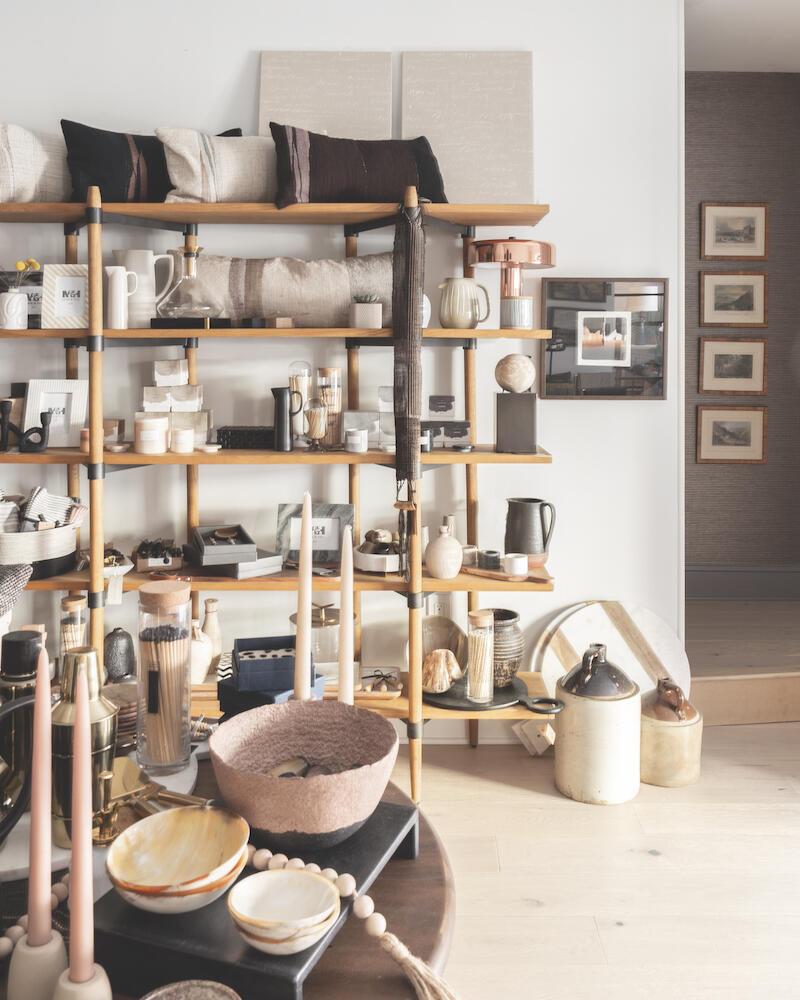With whispers of a recession on the horizon, we asked principals who have weathered an economic downturn what it takes to ride out the storm.

DON’T PANIC
“The first time you hit a downturn, it’s terrifying—it sends you into the depths of despair, and you think about firing everyone, selling your condo and moving back in with Mom,” says Georgia- and New York–based designer Elaine Griffin. “But like all creative businesses, interior design is cyclical. Just like spring always follows winter, after a famine there’s always a feast. Business slowly builds back up and then things take off. The second or third time it happens, you know what to do.” To stay busy and calm during a slowdown, Griffin advises designers to button up systems, develop content for social media and learn new skills: “Use the time. It will get busy again, and you won’t have time to organize your closets and update your branding when it does.”
DO GOOD WITH DOWNTIME
For Dallas designer Jean Liu, a slowdown is an ideal time to tighten up everything about a firm that falls by the wayside during busier periods. That can include anything from maximizing workplace efficiency and organization to updating the website with new projects and copy. Leaner cycles are also a good opportunity to do charitable work. “I would like to spend more time working with the nonprofit Dwell with Dignity,” says Liu. “Even though I am a board member, I feel like my contributions over the last couple of years are barely scratching the surface of what is needed. The organization is growing, and I’d like to be more active in shaping its trajectory.”


INVEST IN SIDE HUSTLES
Gioi Tran and Vernon Applegate founded their California-based firm, Applegate Tran Interiors, in 1999, but until recently they kept their showroom side hustle—the Poliform location in San Francisco—on the down low. “We have owned [the showroom] for several years, but we opted to keep that quiet so as not to confuse the design community,” says Tran, who didn’t want friends or design clients to feel pressured to shop with him. After a banner year during the pandemic, the pair opened a newly built 9,000-square- foot showroom—a point of pride that changed their perspective as they realized that the marriage of product and service could amplify both businesses. As it turns out, design clients wanted to shop with the duo, and the showroom’s interiors generated interest in the design business. “Our investment [in the space] was significant, and we realized that this part of our business held great potential as a second considerable revenue stream—so much so that our usual separation of Poliform and Applegate Tran has now slowly morphed into a deep understanding of the synergy between our two brands and the opportunity to merge these businesses.”

HIRE THE BEST
Coming off celebrating her firm’s 30th anniversary, San Francisco designer Kendall Wilkinson says the best way to weather economic instability has been to get great help. “When you partner with the right accountants, outside consultants and business managers, you collect a body of knowledge and expertise that helps you navigate all the ups and downs of a long career,” she says. Her second piece of advice? Diversify. “I have been an importer of French antiques, a product designer and a shop owner,” says Wilkinson, who is launching her third collection of textiles and trims with Fabricut this year. “I have returned to my roots and am focusing on product design to add additional revenue streams to my business.”
REPACKAGE YOUR SERVICES
Gray Walker believes the key to staying the course during a bad economy is simple: Find a way to package your services that works for the moment. “Create plans for developing future clients by step- ping out of your normal fee structure,” says the North Carolina– based designer. “Come up with a flat fee for a certain amount of hours of design consultation only. In tight times, people still like to paint, rearrange furniture and freshen up without breaking the bank. Give the service a fun name and sell it!”


TRY NEW REVENUE STREAMS
New Jersey designers Miriam Silver Vega and Hillary Kaplan founded their firm in the wake of the Great Recession. Five years ago, they branched out into retail with their Westfield shop Mimi & Hill. Having two sources of revenue, they say, has made their business so much stronger—but they’ve been careful to grow slowly. “We added a small retail shop and outgrew it within three years, so we looked to expand it for another two years,” says Verga. “Last fall, we launched a three-month pop-up, which exceeded our expectations, fueling another expansion. Finding a central location that could house our shop and 20 employees took a year of searching and six months of remodeling, but it was so worth it. Now either our retail will pay the rent or our design business will—the dual income stream makes expanding so much more palatable and definitely helps us weather economic ups and downs.”

FOCUS ON A PROJECT
William Hefner doesn’t exactly recall the 2008 recession fondly, but it was hardly an unproductive time. “That’s when I decided to throw myself into completing my first book, California Homes,” he says. “It turned out to be a great deal of work: writing, working with a publisher on layout, fussing over images and micromanaging the process.” What might have been a distressingly quiet period turned into a bustling time for the Los Angeles designer—and it paid off. “The promotion effort turned out to be a great distraction and a good business decision,” says Hefner. “I think it positioned the firm really well for when things started to improve.”



































